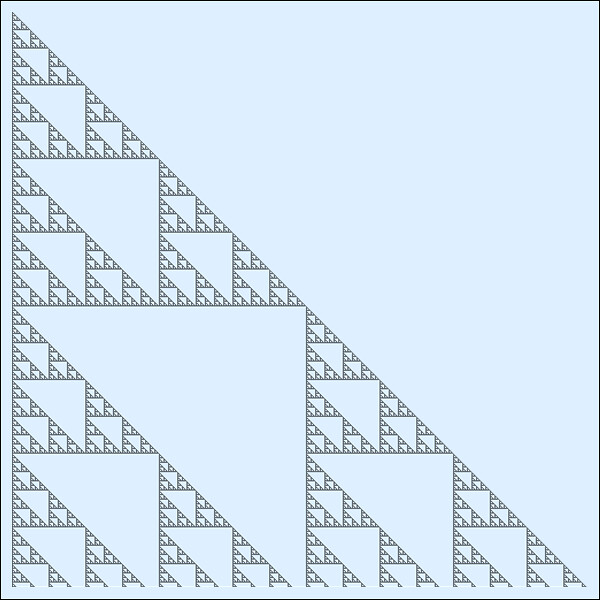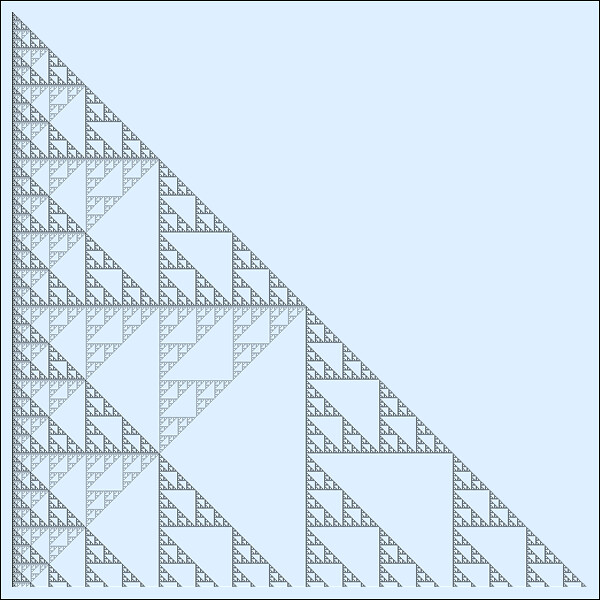
Above is a discrete fractal generated by creating a table of zeros and ones by deciding if the binomial coefficients are even or odd. The “key” here is paint black if odd, otherwise leave light blue.
The pattern is closely related to Pascal’s triangle.
The pattern clearly shows self-similarity as all fractals do.
As far as I know, this pattern was first noticed in [1]. Also note that we have a structure very similar to the Sierpinski Sieve. In the limit of infinite rows we recover the Sierpinski Sieve, up to a shift in the positions of the zeros and ones.
A slight variant

Just for fun I used the same algorithm to study the pattern associated with modified binomial coefficients of the form
\(\left( \begin{array}{c} (-1)^{k}n\\ k \end{array} \right)\)
Again the pattern shows lots of self-similarity.
References
[1] S. Wolfram: American Mathematical Monthly, 91 (November 1984) 566-571
Did you cut off the bottom of the graph – surely the binomial is symmetric. I am assuming that there should be symmetry on the axis y=x – ie it is pascals triangle re-jigged with the “peak” of the triangle at the origin and each axis being the edge of the triangle (ie value 1 and thus black). Or have it read it wrong?
The plots are cut-off in the sense that I have a finite number of points plotted. I think you have read the plot right.
Followed through from your post on “Binomial Theorem” thread.
Concerning the triangle’s orientation… Are the first rows in the bottom left corner of the image?
The first row and first column, which is just a single 1, corresponds to the first row and column of pascals triangle. The whole thing is slanted as the algorithm I used places the first non-zero entry in the fist column.
This could be fixed by placing zeros in the right places and you will get something closer to the Sierpinski Sieve.